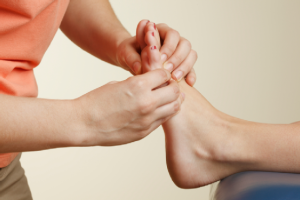
Most of the times, chronic back pain or long term back problems are associated with elderly or middle-aged people. But Juvenile Disc Disorder can also affect the people as young as 20 years of age. It means that if you are an adolescent, even then you cannot save yourself from this deformity. The fact is; some patients may inherit a prematurely aging spine.
What do we understand by Juvenile Disc Disorder?
Juvenile Disc Disorder is a condition, where end-plates of disc spaces are not that much strong to bear the pressures generated within the disc spaces. Such a condition leads to disc herniations into the vertebral bodies and triggers back pain at quite an early age.
The condition is very much similar to that of degenerative disc disease but with a difference that in this condition, degeneration starts at a much earlier age and generally, most of the discs of lumbar spine are involved as opposed to that of degenerative disc disorder, where only one or two discs are typically involved.
What are the causes of Juvenile Disc Disorder?
Following factors can lead to Juvenile Disc Disorder:
- Injury to back
- Weakening of discs due to wear and tear
- Strain and stress you put on your backs
- Changes in your discs and other spine structures
- Decreasing of water in the discs
- Discs become less spongy and much thinner
- Space between the vertebrae above and below the disc gets smaller
- Hypermobility of facet joints
- Your genes; you may be pre-disposed to excessive wear and tear of joints.
What are the potential signs and symptoms of Juvenile Disc Disorder?
Any part of your spine can get affected due to Juvenile Disc Disorder but low back or neck is most commonly affected parts. Other signs and symptoms of the disease include:
- Chronic back and neck pain
- Pain at the site of damaged disc
- Pain radiating to another body part
- More pain while sitting for a long time
- Feeling of pain while bending, lifting or twisting
- Feeling less pain while walking, running or if you change positions frequently
- Pain subsides with rest.
What are the treatment options suggested by the Physical Therapists to treat Juvenile Disc Disorder?
Physical Therapy treatment to treat Juvenile Disc Disorder is much similar to that of Degenerative Disc Disorder. Most of the patients respond well to the physical therapy techniques and recovery is possible in about five-six weeks. Physicals therapists may suggest the following techniques to treat Juvenile Disc Disorder:
- Physical Therapist may suggest rest or restricted activity but for few days only. Extended rest is not recommended and mild activity is suggested for better healing.
- A daily hamstring stretching and aerobic conditioning may be suggested for the better healing
- Deep tissue massage is recommended to release the tension in soft tissues like; ligaments, tendons or muscles
- Heat therapy is suggested to remove the waste by-products caused due to spasms.
- Cold therapy is used to lessen the pain and inflammation.
- Spinal traction is administered to eliminate the pain caused due to the muscle tightness or compressed nerves.
- Various exercises to improvise the flexibility, strength, core stability and range of motion are practised.
- An individualized treatment program, taking into account your health and history is formulated
- Your physical therapists will make you learn about various body mechanics to limit pain. Positions causing pain will also be made familiar to you.
- Proper work ergonomics and posture corrections are taught to help you to take better care of your back.
- Strengthening exercises to strengthen abdominal and back muscles are also recommended.
Juvenile Disc Disorder can wreak havoc on the back of an adolescent, so the parents should watch out for the early signs of the disease and if you find out any warning signs, should go for immediate diagnosis and treatment. Contact Active Physical Therapy for the state-of-art treatment of any of your musculoskeletal disease. Our treatment modules are planned and coordinated according to the needs, requirements and urgencies of our patients. The treatment modules co-ordinated by us will not only cure your current ailment but also pose a check on the further ones.
